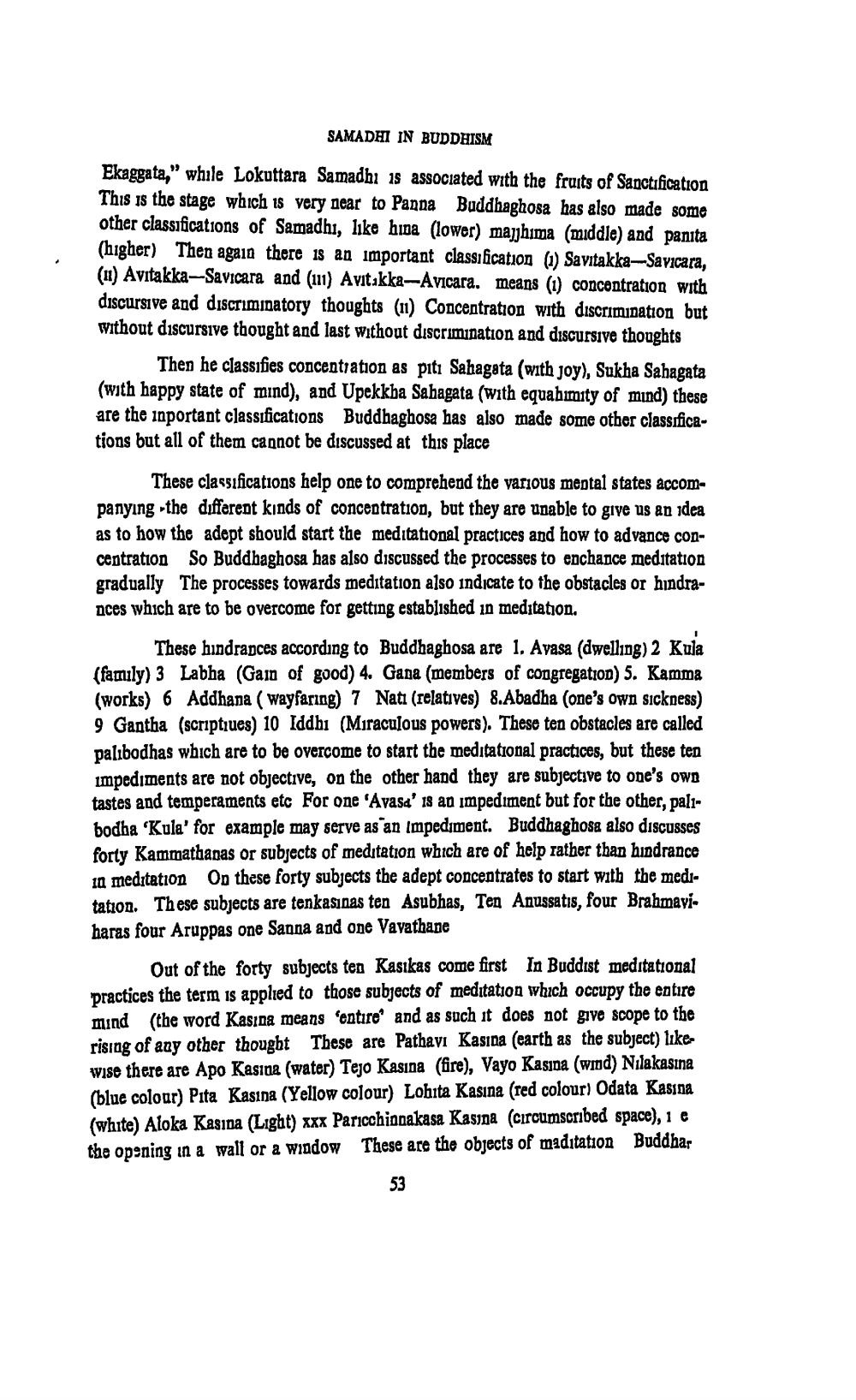________________
SAMADHI IN BUDDHISM
Ekaggata," while Lokuttara Samadhi is associated with the fruits of Sanctification This is the stage which is very near to Panna Buddhaghosa has also made some other classifications of Samadhi, like hina (lower) majhima (middle) and panita (higher) Then again there is an important classification (1) Savitakka-Savicara, (u) Avitakka-Savicara and (1) Avitakka-Avicara. means (1) concentration with discursive and discriminatory thoughts (11) Concentration with discrimination but without discursive thought and last without discrimination and discursive thoughts
Then he classifies concentration as piti Sahagata (with joy), Sukha Sahagata (with happy state of mind), and Upekkba Sahagata (with equabimity of mind) these are the inportant classifications Buddhaghosa has also made some other classifications but all of them cannot be discussed at this place
These classifications help one to comprehend the various mental states accompanying the different kinds of concentration, but they are unable to give us an idea as to how the adept should start the meditational practices and how to advance concentration So Buddhaghosa has also discussed the processes to enchance meditation gradually The processes towards meditation also indicate to the obstacles or hindrances which are to be overcome for getting established in meditation.
These hindrapces according to Buddhaghosa are 1. Avasa (dwelling) 2 Kula (famıly) 3 Labha (Gain of good) 4. Gana (members of congregation) 5. Kamma (works) 6 Addhana (Wayfaring) 7 Nati (relatives) 8.Abadba (one's own sickness) 9 Gantha (scriptiues) 10 Iddhi (Miraculous powers). These ten obstacles are called palıbodhas which are to be overcome to start the meditational practices, but these ten impediments are not objective, on the other hand they are subjective to one's own tastes and temperaments etc For one 'Avasa' is an impediment but for the other, palibodha 'Kula' for example may serve as an Impediment. Buddhaghosa also discusses forty Kammathanas or subjects of meditation which are of help rather than hindrance 10 meditation On these forty subjects the adept concentrates to start with the meditation. These subjects are tenkasinas ten Asubhas, Ten Anussatis, four Brahmaviharas four Aruppas one Sanna and one Vavathane
Out of the forty subjects ten Kasikas come first In Buddist meditational practices the term is applied to those subjects of meditation which occupy the entire mind (the word Kasina means fentire' and as such it does not give scope to the rising of any other thought These are Pathavi Kasina (earth as the subject) likewise there are Apo Kasina (water) Tejo Kasina (fire), Vayo Kasina (wind) Nilakasına (blue colour) Pita Kasina (Yellow colour) Lohita Kasina (red colour) Odata Kasına (white) Aloka Kasina (Light) xxx Paricchionakasa Kasina (circumscribed space), 1 e the opening in a wall or a window These are the objects of maditation Buddhar




